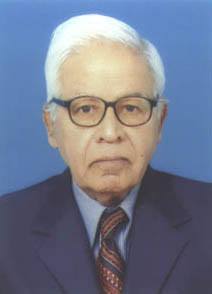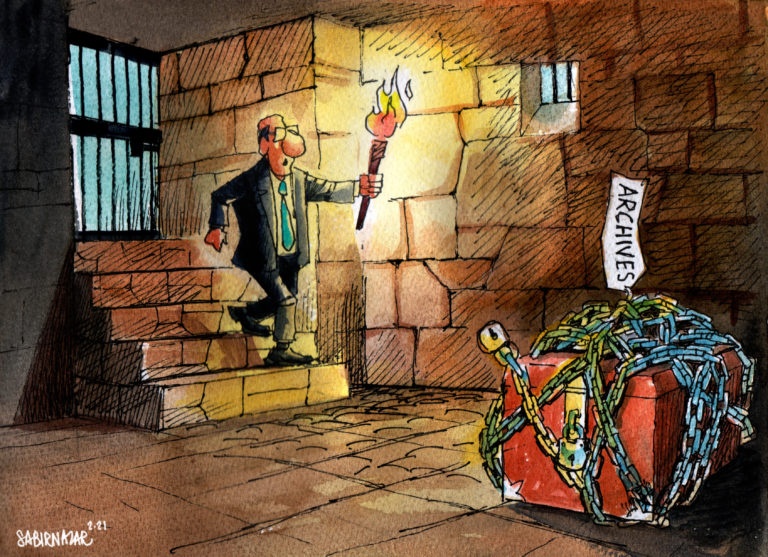Hussain Naqi
The betrayal of the rights of citizens has been the culture of constitutionalism in Pakistan since the country’s inception. The leading (sic.) role of depriving citizens of rule of law, after independence from colonial rule, was played by the civil-military dominated establishment in connivance with clerics and judiciary, at the highest level, which provided (extra) legal cover to all the usurpers.
The Government of India Act of 1935, adopted as the interim Constitution after achieving independence, continued to hold ground for some eight years while India, which gained independence simultaneously, took only four years to frame and enforce a Constitution that has survived since.
It is commonly perceived that the delay in the framing of Pakistan’s Constitution was the failing of political leaders of Pakistan’s two wings. Facts contradict this assumption. The colonial bureaucratic elite, backed by the army commander- in- chief assisted a fellow bureaucrat in becoming Governor General and exercising political authority. Even before Pakistan’s first independence day, the top bureaucrat Chaudhry Muhammad Ali attempted to excise a part of Muhammad Ali Jinnah’s opening address as the president of the first constituent assembly. This part of the speech promised equality of all citizens of Pakistan, with the assertion that religion will have nothing to do with the affairs of the state.
How far Pakistan’s polity has been drifted from Quaid enunciated grund norm (equality of citizens and religion to have nothing to do with the affairs of the state) is apparent from Pakistan’s current mutilated Constitution as well as the earlier constitutions.
Not only have the citizens made unequal with the state having a religion, but legislation has to be in consonance with the majority religion. Furthermore, the civil-military bureaucratic establishment had time and again scuttled attempts for framing of the republic’s Constitution to make it a true federation on the basis of objectives laid down in the Lahore Resolution of 1940. This resolution was adopted as part of the All India Muslim League’s (AIML) Constitution at the 1941 session held at Madras (now Chennai, India).It is argued that the elected AIML members of the first Constituent Assembly (1946) had amended the Lahore Resolution. It is noteworthy that the same sovereign body, the 1946 elected Constituent Assembly was not given the authority to enact an amendment to empower superior courts to issue writs without the assent of the Governor General (GG). However, the governor general and his reconstituted council of minister, which included army commander-in-chief and top bureaucrats, gave the governor general the authority to dissolve the duly elected Constituent Assembly and reconstitute a council of ministers!
The dissolution of the Constituent Assembly in October 1954, when it was to receive and discuss a draft of the Constitution, was challenged in the Sindh Chief Court by the President of the Constituent Assembly, Maulvi Tamizuddin Khan. He was one of the senior most legislators since colonial days and was elected as the Vice President of the Constituent Assembly, under Muhammad Ali Jinnah. Upon the untimely demise of the Quaid-e-Azam in 1948, Maulvi Tamizuddin Khan took over as President of the Constituent Assembly. Under his stewardship the drafting of country’s first constitution was continuing but the process was getting hampered by developments in the political arena. The first Prime Minister of Pakistan Liaqat Ali Khan had been murdered, and the then Governor General Khwaja Nazimuddin, who had been holding the office after the death of Quaid-e-Azam, was elected as the Prime Minister. The vacancy provided the opportunity for a former bureaucrat, Ghulam Muhammad, who was serving as a federal minister, to be appointed as the Governor General. The bureaucratic stranglehold on the Government of Pakistan became strengthened by this appointment.
What followed was lethal for the democratic development of Pakistan as the then apex court’s chief and most of his brother judges opted to become fellow travellers of the civil- military bureaucratic establishment, instead of contributing to enforcement and strengthening of rule of law. This shift in the role of country’s top judiciary became public knowledge when the reconstituted council of ministers, that included the army chief, challenged the jurisdiction of the Sindh Chief Court to accept the petition to overturn the dissolution of the Constituent Assembly and the cabinet’s reconstitution. The Sindh High Court did not concede the plea against its jurisdiction and accepted Maulvi Tamizuddin’s petition holding that the Governor General’s approval was not required as the Constituent Assembly was not acting as the federal legislature. The decision was challenged through an appeal before the Federal Court by the federation of Pakistan and the reconstituted council of Ministers. During the course of the hearing, chief justice Muhammad Munir made a disturbing observation: the court does not have any instrument of power to enforce its order if it decides to side with the petitioner before the chief court of Sindh. However he had no qualms about siding with Ghulam Muhammad and his coterie. This was the prelude to another one of his rulings legitimising General Ayub’s coup. For both rulings Justice Munir invoked the outdated doctrine of necessity.
Chief Justice Munir and most of his brother judges created a precedent for apex court to acquiesce before all the usurpers namely Ayub, Yahya, Zia and Musharraf. It resulted in military dictatorships consuming more than three decades of Pakistan’s political history. Usurpers, during their illegitimate reigns inflicted great tragedies of loss of population and territory and even the execution of an elected chief executive, prime minister Z.A. Bhutto who, along with the left-over of Pakistan’s legislators, had delivered the almost unanimously accepted 1973 Constitution.
This unique culture of constitutionalism in Pakistan saw the promulgation and subsequent abrogation of three constitutions, by the men in uniform who had taken oaths to abide by them. The first victim was the 1956 constitution piloted by a bureaucrat in the second constituent assembly that named Pakistan an Islamic Republic. It denied the majority population the right of one vote to one person and created parity of representation between the two wings. It also saw the formation of a province titled as “West Pakistan” through forced merger of three provinces along with representatives from what is Balochistan today. It was abrogated in a couple of years through a coup mainly to deny holding of General Elections so as to abort the possibility of a federal legislature and government that was not pliable by the reigning military dominated establishment. The usurper promulgated a Constitution under his own signature depriving the citizens of forming political parties and electing their representatives through direct polls. Soon he had to amend it and form his own faction of Muslim League facilitated by a former president of the Pakistan Muslim League Chaudhry Khaliquzzaman. Finally, when he was to leave office Ayub violated his own constitution.
When Ayub Khan stepped down instead of the speaker, as per the constitution, the power was handed over to army chief who imposed his own diktat, revived the provinces while recognising the provincial status of Balochistan. Elections were held to the national and provincial assemblies but the proposed first session of the national assembly, that was also assigned to frame a Constitution, was postponed indefinitely. Consensus could not be reached between the military dictator and the elected leadership and instead of transfer of power to elected representatives’ majority a bloody operation was unleashed on the citizens, which resulted in secession in 1971 and emergence of Bangladesh.
The 1973 Constitution was also subverted through a military coup by General Zia-ul-Haq that also witnessed the judicial murder of Prime Minister Zulfikar Ali Bhutto. On its restoration in 1985 it was a totally mutilated document with almost six dozen of its sections amended through a single amendment to the 1973 document. This document saw further mutilation under the, so far, last usurper, General Pervez Musharraf which has been partially restored but there is no hope that the citizens of Pakistan are going to have a truly federal basic law that adheres to the aforementioned principles laid down under the 1940 Resolution and in Quaid-e- Azam’s opening address to the Constituent Assembly.
[Mr Hussain Naqi is renowned journalist and human rights activist]


